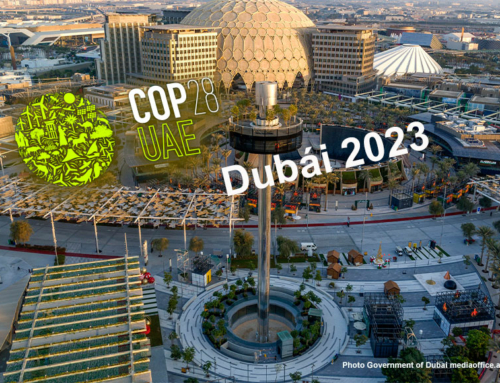Updated June 20, 2022
The war in Ukraine is showing setbacks in some fossil energy cancellation programs, as in the case of Germany, which yesterday announced the resumption of the use of coal as fuel, despite having celebrated two years ago the closure of its last underground coal mine. Similarly, the war is an important accelerator of renewable energy, to achieve in most countries their independence from imported fuels.
Regardless of the current conflict, we think that sooner rather than later pragmatism is going to prevail and exceed the objectives of the Paris Agreement, regarding greenhouse gas emissions, the main cause of the continuous increase in global temperature and climate change. We are talking about the growing share in the energy markets of solar energy, wind energy, green hydrogen and lithium batteries for electric cars. We also refer to the announcement by some countries of a total ban on internal combustion cars, some as close as 2030, others for 2040 and 2050.
“Ambition” as the backbone of the Paris Agreement
Climate ambition is the fundamental guideline of the Paris Agreement to achieve the goal of limiting global temperature to 2 °C, based on the year 1750, and adjusted to 1.5 °C in 2018. The global objective of the Paris Agreement is subordinate to the sum of the national ambitions of the 197 parties. This, in theory, should be enough to stop the planet’s global warming and prevent climate change from becoming uncontrollable. To do this, three major difficulties must be overcome.
First difficulty: the ambiguity of the word “ambition”
The “ambition” is summarized in a series of guidelines by means of which each of the parties must establish its own level of “national ambition”, so that each party can set its goal of its own free will. The individual actions necessary to achieve the global objective are included in the so-called Nationally Determined Contributions (NDC).
In its article 3, the Paris Agreement requires that “such actions be ambitious”, “that they represent progress over time” and are established “to achieve the purpose of this Agreement”. Three expressions that clearly reveal the imprecise nature of the document and give rise to subjective interpretations and the discretionary use of the Paris Agreement.
In practical terms, the ambition is geared towards the willingness of each of the parties to the COP to undertake a series of preparations in order to curb climate change, such as emission reduction commitments, means of implementation and financing involved.
The lack of pragmatism and leaving the decisions to the will of each of the parties represent flaws in the origin of the Paris Agreement, since they occurred in the drafting of the document, whose consequences have emerged in each of the climate meetings.
Second difficulty: the quantification and verification of the state of ambition of each of the parties
Quantifying and consolidating the ambition of the 197 parties that have signed the Paris Agreement is a complex matter. It is almost impossible to find out what state the greenhouse gas emissions are in and the tasks to which each of the parties has committed themselves, as well as to verify them according to the ambition they have presented.
The NDC Partnership, which defines itself as “a coalition of countries and institutions working together to mobilize support and achieve ambitious climate goals, while enhancing sustainable development”, puts it this way: “As countries work to reducing their emissions and adapting to a changing climate presents a common challenge: it is not possible to adequately manage what cannot be measured, reported and verified. It is necessary to evaluate if efforts to mitigate climate change are being effective through measures that reduce greenhouse gas (GHG) emissions and if these measures are sufficiently robust and efficient to guarantee compliance with the climate commitments that each country has done”.
According to Article 13 of the Paris Agreement, “the Enhanced Transparency Framework (ETF) requires countries to establish robust national monitoring, reporting and verification (MRV) systems that will in turn enhance and guide their nationally determined contributions (NDC). For developing countries, including those in the Latin American and Caribbean region, the lack of robust MRV systems represents a technical and financial challenge, as countries make quantitative commitments vis-à-vis the rest of the planet to reduce their emissions of GHG.”
Third difficulty: the non-binding nature of the Paris Agreement
The word ambition does not seem appropriate to express the objective that was pursued. It is too abstract and lacking in restraint. It is like a heavy and huge bundle without a handle to take it. Herein lies its main weakness and default. We imagine that the drafters of the Paris Agreement chose the word “ambition” to avoid the word “obligation”, thinking that it was not going to be accepted by some countries. The purpose, we suppose, was to prevent the Paris Agreement from being seen as a mechanism of interference in the sovereign affairs of countries. Only the review, communication, and transmission of information to the United Nations Convention is mandatory.
The document is based on “soft law”, as explained by Dr. César Nava Escudero in his article “The Paris Agreement. Predominance of soft law in the climate regime”, published in the “Mexican Comparative Law Bulletin “which can be read at this external link. Let us see what the summary of Dr. Nava’s extensive academic work says:
“It is common practice among States to adopt, within the international environment protection regime, to which the climate regime belongs, binding agreements with a high content of norms that are not mandatory; that is, rules of soft law. The 2015 Paris Agreement is precisely one example of this. Through a brief analysis of the soft content in the two most important conventional antecedents (that is, the United Nations Framework Convention on Climate Change of 1992, and the Kyoto Protocol to said Convention of 1997). The purpose of this article is to examine some of the most relevant provisions of the Paris Agreement, to corroborate the recidivism of States in the use of non-binding norms for these types of treaties. This shows that said agreement, legally speaking, is not an exceptional instrument, but only the repeated manifestation of the international community to face climate change in this way. ”
The devastating conclusion of Dr. Nava, which increases concern about the viability of the agreements presented in Paris in 2015. In our opinion, the Paris Agreement will continue its journey without many changes until reaching Glasgow-2021, where, presumably, its flaws or the viability of the execution of the document will be revealed.
Conclusions:
What to do then? Are there projects or parallel actions under development that can correct the deficiencies of the Paris Agreement? Will industry or SMEs be able to correct what countries fail to do?
The COVID-19 pandemic has surprised and affected us all. That it serves as experience to take note and prevent climate change from surprising and affecting us, but probably in a more aggressive way.
It is feasible, and it is underway, that the fight against climate change will be fought, in addition, on the battlefield of the “real economy”, a pragmatic scenario outlined in the “UN Climate Change Communiqué” of December 12, 2020. This change was expressed in the “Race to Zero” campaign, launched on June 5, 2020, on the occasion of the celebration of World Environment Day. In this regard, the UN has reported:
As governments prepare to make commitments at the current Climate Ambition Summit, new data reveals those members of “Race to Zero” campaign represent 12% of the global economy, giving additional hope that public-private collaboration will deliver on the Paris promise. At the same time, “real economy” players are matching this ambition with 23 regions, 524 cities, 1,397 companies, 569 universities and 76 investors now joining the Race to Zero campaign. All of these actors meet strict criteria, including submitting a science-based plan and setting an interim target, creating a more consistent and transparent approach to achieving net zero emissions.
There is also another encouraging news, and it is the launch of the “Hydrogen Catapult”, the name of the initiative that aims to unify the efforts of several of the largest electricity companies, in order to increase and lower the cost of green hydrogen production. Its purpose is to progressively replace fossil fuels until reaching the goal of zero net global emissions by 2050. That is an especially important contribution to limit the increase in global temperature to 1.5 °C, the main column of the Paris Agreement. Green hydrogen is seen as the new energy, the energy of the 21st century called to cancel the oil age.
It is also worth remembering the rapid growth of the solar and wind energy industries.
Finally, we must not forget the willingness of vehicle assemblers to incorporate a growing number of electric cars, buses, and trucks into their production lines. Some brands have already announced the date when the last internal combustion car will go through their doors. That day the world must stop and give a standing applause.
It would only be necessary to stop the uncontrolled deforestation of the world’s forests to be able to glimpse the end of the tunnel and say that humanity has won the fight against climate change.
Sandor Alejandro Gerendas-Kiss







Leave A Comment